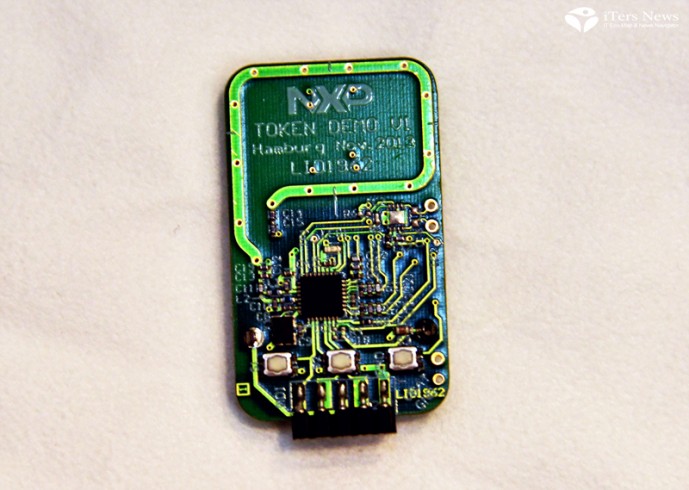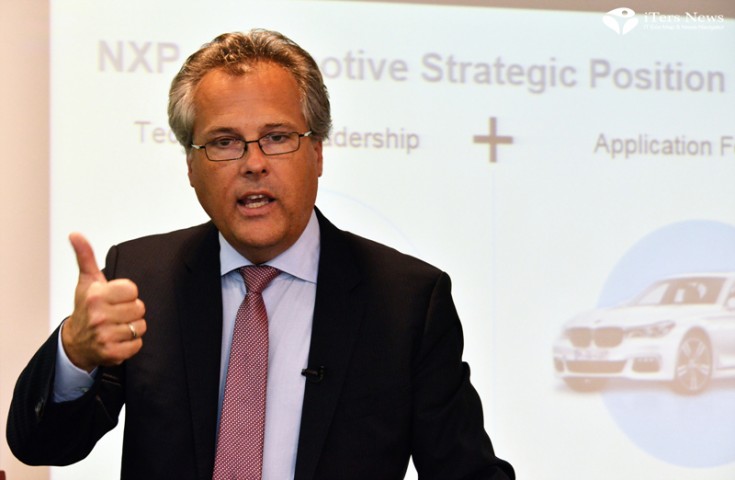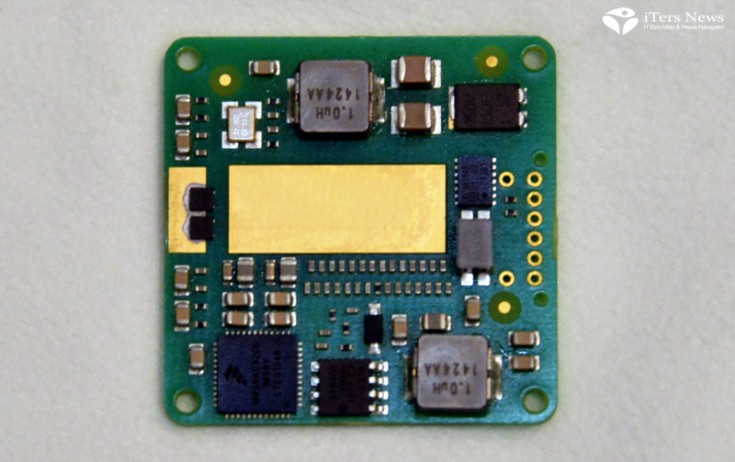At the press conference held in Seoul on Sept. 29, Kurt Sievers, EVP and general manager of BU automotive of NXP Semiconductors, said “We think that the automotive industry will change in the next few years significantly more than it has changed in the past 50 years.”
Added he, “The main changes will come from cars becoming connected, electric, and much more convenient to use, more sexy and fun to drive, and economically clean. So, now, most of this is to keep up with demand for more safety, by demand for less CO2 emissions and environmental concerns, and thirdly, simply (because) by consumer demand for something more fun and sexy. Future automotive will be driven by three trends- safer, cleaner, and more fun to drive.”
More than 1,000 chips are embedded in cars today on average, according to Sievers. NXP takes nearly 14% of the US$30billion automotive chip market, supplying a wide array of chips for global top-tier automakers like BMW.
Here is one example of how ubiquitous NXP’s chips are in cars. According to NXP, BMW’s 7 series cars are using NXP chips to power and manage such functions as ADAS, or advanced driver assistant system & safety, car infotainment system, secure car access, power train& chassis, body comfort & networking, and other standard products. All combined, NXPs’ BOM or bill of materials cost in each of the cars is worth more than US$300.
US$300 BOM costs in BMW 7 series cars

“It’s not about the future, but this is about today. Now we are not only strong in this car, but we are the number one semiconductor company in car infotainment, body applications, powertrain, secure car access, and the fast-growing new domains like ADAS to safety to security which is the future of automotive,” stressed he.
He went further to say that one quarter of the automotive semiconductor chip market is in microcontrollers, while analog chips represent the bigger pie of that market. Sensors are also taking up some smaller portions, and others take the rest.
And, NXP is doing everything in microcontrollers, analog in RF, a big part of sensors, and etc.
“We leverage that technology precision to become a solution leader in these applications like car infotainment, secure car access, body safety, and powertrain. So these are the applications where NXP shows leadership through the width and breadth of the technologies that our company owns. This is where we are today maintaining market leader position in automotive semiconductors, “he continued.
His ambition goes beyond what the market is today, however.
As he pointed out, consumers are getting more and more conscious about car safety, fuel efficiency, and tailpipe emission. They are also eager to do more than what they used to do with cars, extremely demanding always-on in-vehicle connectivity for entertainment and information.
Take car safety for example. ADAS are rapidly becoming the fixture of most of premium, top-line passenger cars, not only alerting drivers of imminent car collisions, or departing lanes, but also letting them see around to detect objects or pedestrians on the blind spots. Cars are also connected with each other and to the Internet to improve their safety features communicating with road infrastructures like traffic lights and other cars to share information on what’s going on the road ahead.
Coming built with ultra-light-weight digital dashboards and digital instrumental clusters rather than heavy and bulky mechanical stuffs, cars are also lighter and a lot more fuel efficient, spewing less of tailpipe carbon emission. Strikingly enough, car makers are even on autonomous driving cars and battery powered-electric vehicles, tapping into new market opportunities for semiconductor chip makers.
Toward self-driving cars

Kurt Sievers, EVP with NXP Semiconductors
“The biggest change in the future of automotive industry is about cars in future, which we call as self-driving robots, the cars which replace the human being when it comes to the driving task. It has to sense its environment, so it gets information about other cars, pedestrians, traffic light (whether if it is green or red), which is basically sensing the surrounding environment. With all of the information collected, it starts to think and made decisions, like our human brain will take decisions on what to do,” said EVP Sievers.
“On breaking, on accelerating, on steering, and then it needs to take that decision and put it into action which is actually indeed accelerate, or break, or steer left or steer right. Everything I described now, this whole chain is currently happening in our brain and with our muscles.”

According to his scenario, cars of future will sense its environment with a multitude of different sensors like camera sensors and radar sensors and then will communicate with other cars, and be connected with other cars and get more information. To make a decision on how and what to do, they will come built with very powerful CPUs, or the brains. And, there is again electronics for in-vehicle network in the car which will make sure that all of the intelligent decisions are going to the steering, brakes, and etc. to take actions.
“So this is a big paradigm shift because it really takes human being out of the equation, making the car much safer, “he added.
To put this scenario into a reality, NXP is working overnight to have many breakthrough silicon solutions ready for production. Among them is a 77MHz 16 channel RF CMOS radar transceiver chip solution that enables cars to detect moving objects on the road. Applications include emergency braking, adaptive cruise control, blind-spot monitoring, cross-traffic alert, lane-departure warning, and automated-parking. It consumes 40 % less power than conventional radar ICs. Google is actually field testing our radar sensors in their little robot car
This is just one example of how NXP is the innovation in the sensing side of the self-driving car.
NXP also want to make cars safer, more intelligent, and faster in its reaction time than the human beings are. Its IEEE802.11p-based V2X, or vehicle to vehicle or vehicle to infrastructure communications chipset solutions are the technology enabling engine for such applications.
The V2X chipset is being installed and field-tested in Korea now as part of the 2018 Pyeongchang Winter Olympics to be held in Korea in 2018. The system will be also used by the General Motors of U.S., the U.S. car maker plans to embed it in its GM’s new Cadillac line next year.
The V2X chip set is also at the heart of what’s called as truck platooning where trucks are being chained digitally and electronically driving one after another and synchronizing their operations.
Trucks in hot sync to slam a brake
For example, when a driver on the first or lead truck slams on a brake to avoid collisions with unexpected objects, the chipset immediately tells trucks in the wake to come to a quick and emergency stop, taking several less time than human driver to take into action.
The system comes complete with cameras, RF CMOS radar chips and V2X chipset.
NXP’s other automotive chip portfolio include in-vehicle networking chips like Ethernet chips, secure ID chips for car security, powerful computing processors called as Blue Box, and other analog stuffs like power management ICs and voltage regulators.
“I also talked about the brain. There’s all of this sensing at first, but in end somebody or something needs to make decisions. And NXP has put forward what we call as blue box, which is a development platform to bring together all of the elements for self-driving cars including camera sensors, radar chips, V2X, and CPU processors, “EVP Sievers said.
“Video games in a PC, once in a while they hang up or stop, they require reboot or something to put the device back on line. This must never happen in the car. The central brain in the car of the central platform should never stop working. That is why it is so important to have an architecture which has high computer power but also has safety and redundancy mechanisms to deal with the safety requirements in the car, “ stressed he.
(David Jin contributed to this article)

